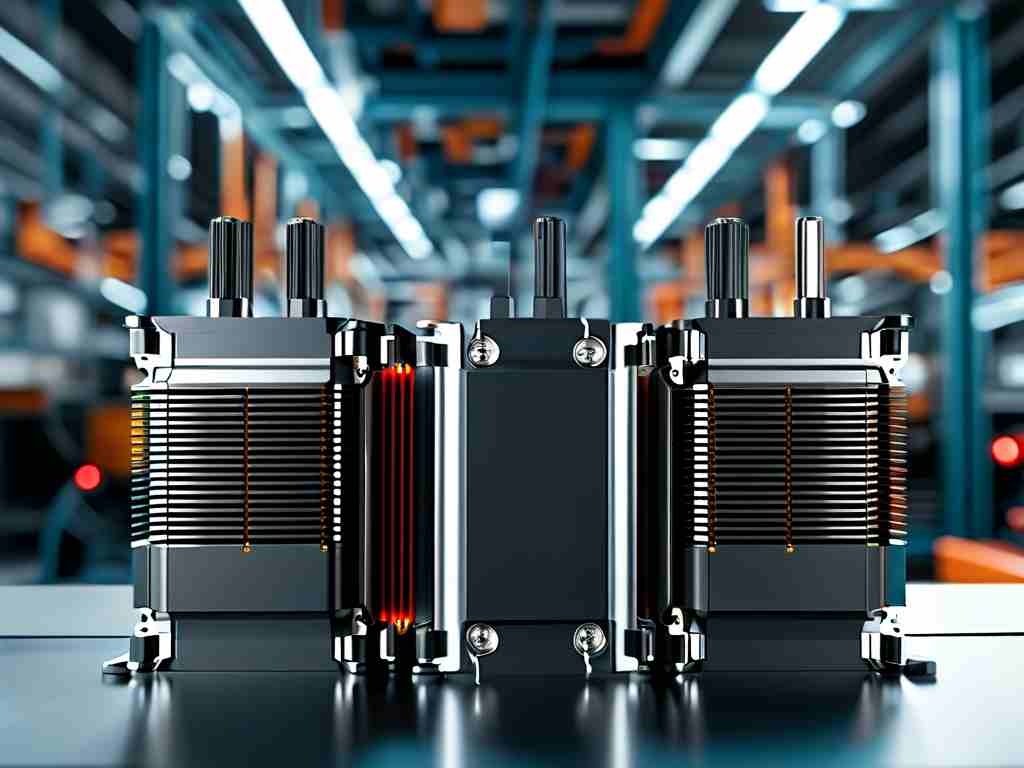In modern industrial automation and robotics, the integration of motor control systems with embedded development has become a cornerstone of innovation. This article explores the technical nuances of designing embedded solutions for motor-driven applications, emphasizing practical implementation strategies and performance optimization.

The Role of Embedded Systems in Motor Control
Embedded systems serve as the brain of motor control architectures, enabling precise command execution and real-time adjustments. Unlike traditional microcontroller setups, modern embedded platforms leverage 32-bit processors and hardware-accelerated peripherals to manage complex pulse-width modulation (PWM) signals. For instance, ARM Cortex-M4 cores with floating-point units (FPUs) are increasingly adopted for sensorless field-oriented control (FOC) algorithms in brushless DC motors.
A typical motor control firmware structure includes three primary layers:
void main() {
HAL_Init(); // Hardware abstraction layer initialization
Motor_Config(); // PWM timer and ADC setup
while(1) {
Read_Sensors(); // Current/position feedback
FOC_Algorithm(); // Real-time motor control
Update_PWM(); // Duty cycle adjustment
}
}
This code skeleton demonstrates the cyclic execution pattern essential for maintaining motor stability, particularly in variable-load scenarios.
Hardware-Software Co-Design Challenges
Developing motor-driven embedded systems requires meticulous hardware-software integration. Engineers must account for electromagnetic interference (EMI) suppression in PCB layouts while ensuring low-latency interrupt handling in firmware. Recent advancements in gallium nitride (GaN) power semiconductors have enabled switching frequencies exceeding 100 kHz, demanding corresponding improvements in embedded software response times.
Thermal management presents another critical consideration. Embedded controllers must implement dynamic current limiting algorithms that adapt to temperature changes:
void Thermal_Management() {
if(Read_Temp() > MAX_SAFE_TEMP) {
Reduce_DutyCycle(30%); // Prevent overheating
Trigger_Cooling_Fan();
}
}
Such protective measures significantly enhance system reliability in continuous operation environments.
Emerging Trends in Motor Drive Technology
The convergence of IoT and motor control has given rise to smart predictive maintenance systems. Embedded developers now integrate vibration analysis algorithms with motor controllers, enabling early detection of bearing wear or rotor imbalance. A 2023 study by the Industrial Technology Institute showed that such implementations reduce unplanned downtime by 41% in manufacturing setups.
Wireless firmware updates (FOTA) represent another breakthrough. Dual-bank flash memory configurations allow seamless transition between motor control firmware versions without interrupting production processes. This capability proves particularly valuable for adjusting motor parameters in field-deployed agricultural equipment or autonomous guided vehicles (AGVs).
Optimization Techniques for Embedded Motor Controllers
Memory-constrained embedded systems demand efficient code structures. Techniques like lookup table (LUT) compression for motor commutation patterns can save up to 40% of Flash memory space. Additionally, using DMA controllers for ADC sampling minimizes CPU overhead, freeing resources for advanced control algorithms.
Experimental data from a 3-phase induction motor testbed revealed that combining space vector modulation (SVM) with adaptive PID tuning improves energy efficiency by 18% compared to conventional six-step commutation methods. These optimizations underscore the importance of algorithm selection in embedded motor control implementations.
Regulatory Compliance and Safety Standards
Developers must navigate evolving compliance frameworks such as IEC 61800-5-1 for adjustable speed electrical power drive systems. Embedded firmware now commonly includes functional safety modules compliant with ISO 13849, featuring redundant watchdog timers and automatic fault injection tests during system initialization.
The fusion of embedded systems engineering with motor drive technology continues to push the boundaries of electromechanical system capabilities. As edge computing and AI-assisted control algorithms mature, next-generation embedded motor controllers will likely incorporate on-device machine learning for autonomous parameter optimization. For developers, mastering both the electrical and computational aspects remains key to delivering robust, high-performance motor control solutions.









